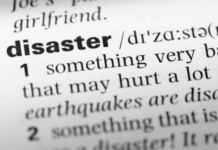The incidence of fires related to lithium-ion batteries is increasing with the growing popularity of electric vehicles (EVs). Extinguishing these fires poses a challenge for firefighters, raising concerns among experts. Notably, a General Motors (GM) plant in Michigan had to be shut down recently due to a fire involving EV batteries.
December 19 saw the initiation of a fire at the GM Factory Zero plant in Detroit. Classified as a three-alarm fire, it prompted a response involving three times the usual number of firefighters and trucks. Sixty firefighters and 18 trucks were dispatched to address the incident.
The extensive 4.5-million-square-foot factory was engulfed in dense smoke, necessitating a full evacuation.
As per the Detroit Free Press, Tara Kuhnen, a GM spokeswoman, disclosed that the fire was initiated when a forklift accidentally pierced a container containing battery materials, leading to the ignition. The incident originated on the shipping docks, resulting in the combustion of several other batteries.
Thankfully, there were no reported injuries or fatalities in the fire, as stated by Detroit Fire Chief James Harris. He mentioned that the fire department is currently conducting an investigation into the incident.
By 6 a.m. the following morning, employees were able to resume their regular shifts. Tara Kuhnen noted that the majority of departments at the plant were operational again, including the vehicle assembly line.
The surge in lithium-ion battery fires is introducing a new challenge for firefighters nationwide. These batteries exhibit unpredictability and the potential for thermal runaway. According to Andrew Klock, the senior manager of training and education at the National Fire Protection Association, thermal runaway occurs when the heat from one cell triggers the ignition of the next cell and so forth.
Certain vehicle lithium-ion batteries are comprised of a substantial number of cells, ranging from 5,000 to 9,000. Andrew Klock likened this configuration to lighting a single match in a matchbox, where the potential for the entire box to catch fire becomes a significant concern.
While there is an uptick in these fires, it’s important to note that they are still regarded as rare occurrences.




